You are flying on radial 227° inbound to a vor the wind is from 270° and the ? [ Answer reports ]
Question 190-1 : 1 047° 2 044° 1 227° 2 230° 1 047° 2 047° 1 237° 2 233°
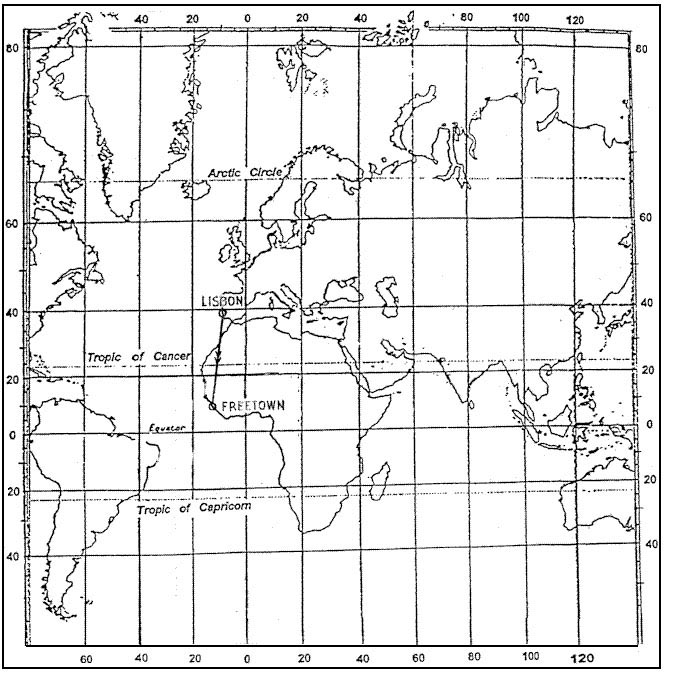 (1) 047°; (2) 044°
(1) 047°; (2) 044° A doppler vor provides usable signals up to what distance from the station and ?
Question 190-2 : Up to 200 nm from dvor for en route ifr traffic up to 100 nm from dvor for military ifr traffic up to 75 nm from the terminal area for all traffic within the control zone up to 25 nm from the approach area for traffic following lnav approaches
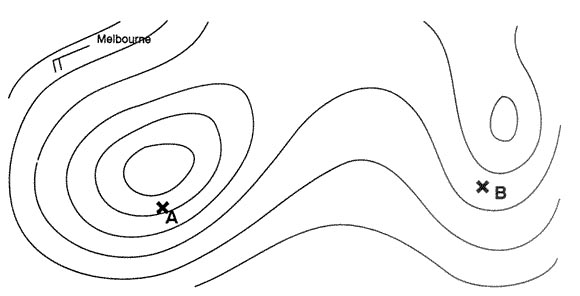 Up to 200 nm from dvor for en-route ifr traffic.
Up to 200 nm from dvor for en-route ifr traffic. When tuned in to an ndb when is dip error most likely to occur ?
Question 190-3 : When turning towards the ndb within the ndb's cone of confusion when tracking or homing to the ndb with a crosswind when flying directly away from the ndb
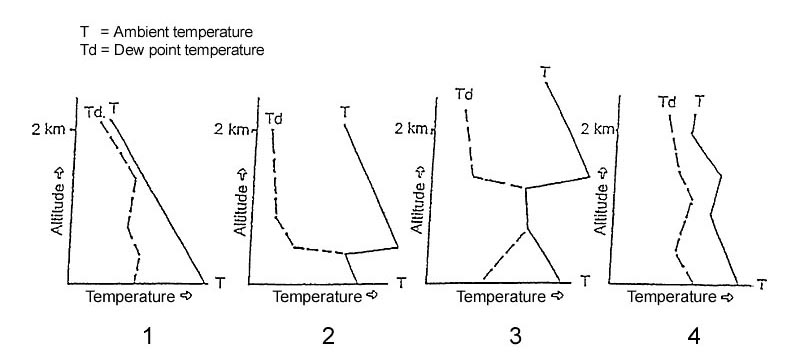 When turning towards the ndb.
When turning towards the ndb. When holding at an ndb you are approaching the beacon on the inbound leg how ?
Question 190-4 : The head of the needle will be pointing to the fix and the needle will turn 180° when passed it the head of the needle will be pointing away from the fix and the needle will turn 180° when passed it the to indication will become a from indication after passing the fix the indicator will go from full left deflection to full right deflection when passing the fix
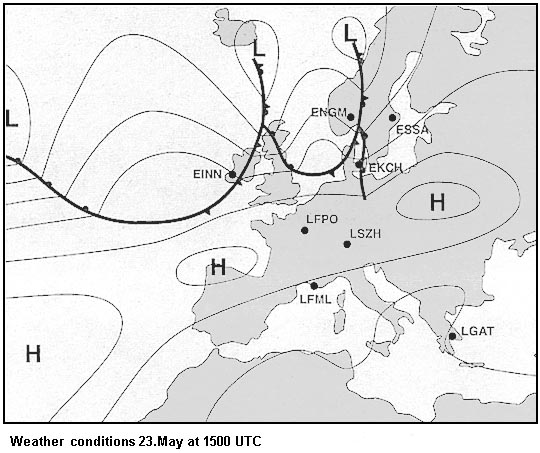 The head of the needle will be pointing to the fix and the needle will turn 180° when passed it.
The head of the needle will be pointing to the fix and the needle will turn 180° when passed it. You are flying the inbound course of an ndb holding pattern in an area of local ?
Question 190-5 : The needle will point towards the thunderstorm the needle will keep moving from the top to the bottom of the adf the needle will be moving erratically especially at night no disturbance
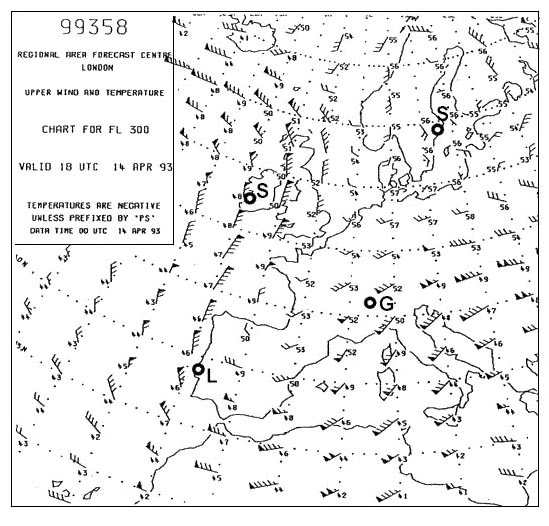 The needle will point towards the thunderstorm.
The needle will point towards the thunderstorm. During an ils approach with 3º glide slope you initiate a go around when the ?
Question 190-6 : The aircraft is flying within the side lobes of the glide path signal the instrument has failed and has kept the previous indication the aircraft is flying through the opposite runway glide path the approach has a higher glide path
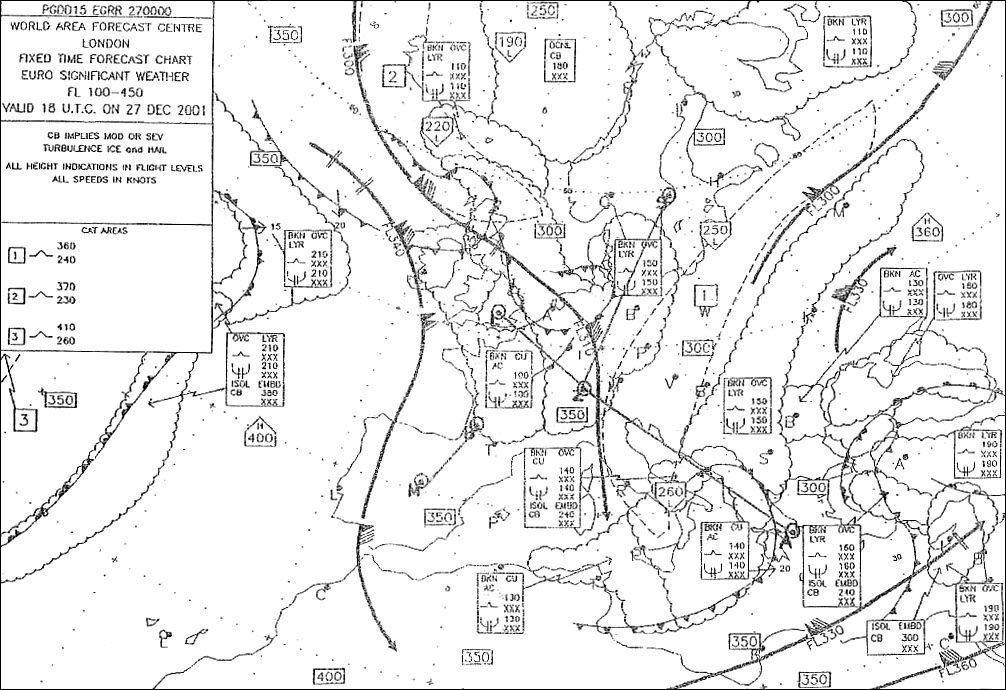 The aircraft is flying within the side lobes of the glide path signal.
The aircraft is flying within the side lobes of the glide path signal. You are flying across northern canada on airway nca whiskey you wish to cross ?
Question 190-7 : 188° 118° 194° 298°
 188°
188° What criteria must be met to be considered 'established' on an ndb approch ?
Question 190-8 : The bearing pointer must be within 5º of the required course the relative bearing must be less than 5º the wind correction angle must be less than 5º variation due to reflections from terrain may not exceed 5º
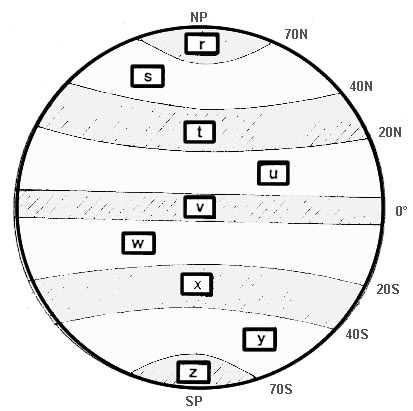 The bearing pointer must be within 5º of the required course.
The bearing pointer must be within 5º of the required course. On a back beam ils approach with the inbound course from the chart set on the ?
Question 190-9 : The cdi will be reverse sensing with no glide path information they will receive no glide path information but correct azimuth indications on the cdi they will receive limited glide path information but correct azimuth indications on the cdi the cdi will be reverse sensing with limited glide path information
 The cdi will be reverse sensing with no glide path information.
The cdi will be reverse sensing with no glide path information. How can ndbs be used for navigation near the destination aerodrome ?
Question 190-10 : As a locator beacon to start the final approach segment as a marker beacon along the final approach segment as a vor beacon to track a localiser signal along the final approach segment as a dme beacon to give range information along the final approach segment
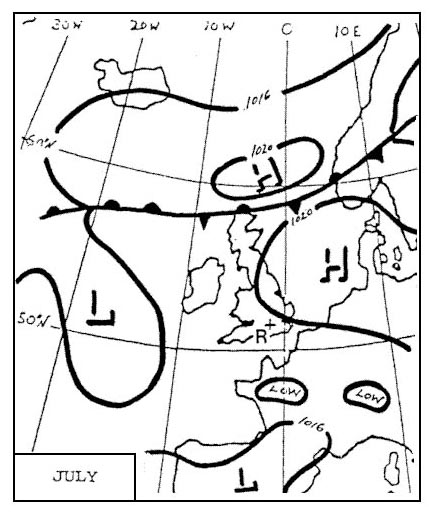 As a locator beacon to start the final approach segment.
As a locator beacon to start the final approach segment. You are flying a dme arc as part of a procedure when you begin a descent/climb ?
Question 190-11 : It will not change because the slant range is the same it will increase because the range decreases it will decrease because the range decreases it will increase because the range increases
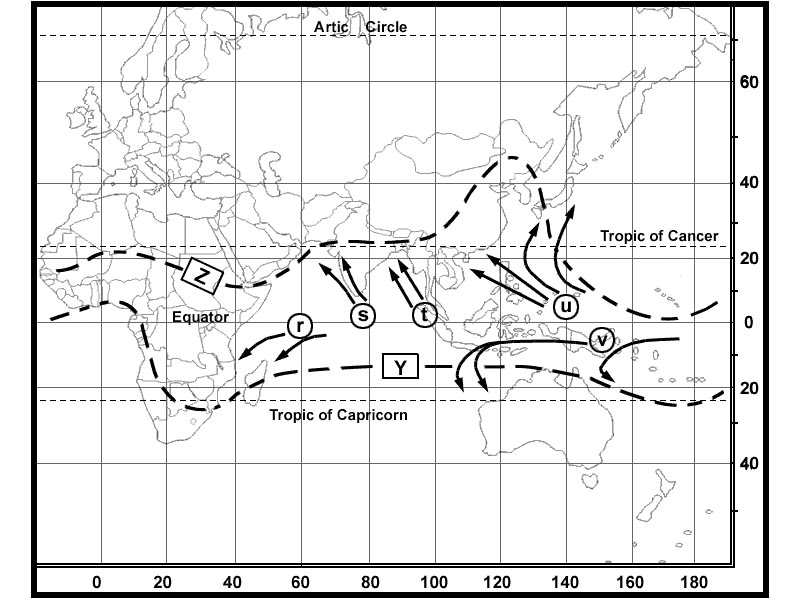 It will not change because the slant range is the same.
It will not change because the slant range is the same. Which of the following frequencies may be allocated to a vor station 1 ?
Question 190-12 : 1 and 2 2 and 3 1 only 3 only
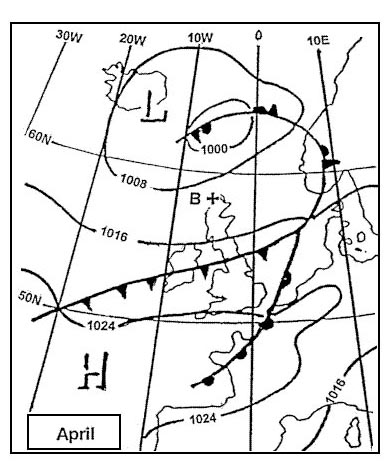 1 and 2.
1 and 2. Multipath errors are caused by… ?
Question 190-13 : Objects within the ils coverage area objects outside of the ils critical area objects within the ils sensitive area objects within the ils critical area
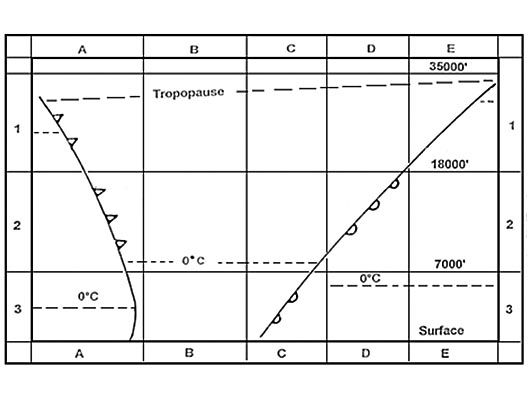 Objects within the ils coverage area.
Objects within the ils coverage area. An aeroplane is on approach with nav 1 tuned to the ils frequency and nav 2 ?
Question 190-14 : Full scale deflection quarter scale deflection half scale deflection no deflection
 Full scale deflection.
Full scale deflection. As an aeroplane is approaching the runway while taxiing for departure the ?
Question 190-15 : The landing minima for cat ii and ill operations are lower and therefore require greater precision and an aircraft waiting too close to the landing runway may affect the quality of the ils signals because of the lower visibility observed during cat ii and iii operations the landing pilot s may mistake the lights from the waiting aircraft as runway lighting causing a distraction during the landing since aeroplanes perform an autoland during cat i operations the autopilot is able to fly the aeroplane more accurately and therefore the cat i position may be closer to the runway aircraft must be kept further away from the runway during cat ii and ill operations as arriving aeroplanes may land automatically and therefore require more space
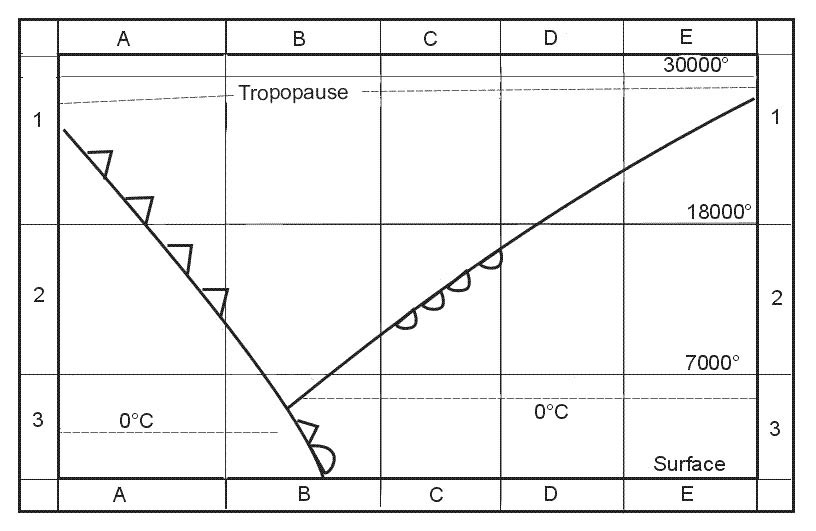 The landing minima for cat ii and ill operations are lower and therefore require greater precision, and an aircraft waiting too close to the landing runway may affect the quality of the ils signals.
The landing minima for cat ii and ill operations are lower and therefore require greater precision, and an aircraft waiting too close to the landing runway may affect the quality of the ils signals. At night the ionosphere undergoes changes in ionisation density leading to ?
Question 190-16 : Fading caused by the received ground wave and sky wave going out of phase absorption mostly affects the ground wave and is dependent on the transmission power fading caused by the received ground wave and sky wave going in phase attenuation and its impact are greatest on sky waves with high transmitted frequencies
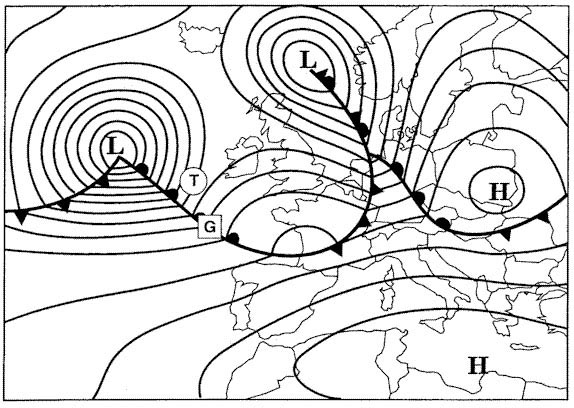 Fading, caused by the received ground wave and sky wave going out of phase.
Fading, caused by the received ground wave and sky wave going out of phase. A tacan tactical air navigation radio aid is a uhf military system that may ?
Question 190-17 : Be used for range information by civil aircraft be used for bearing information by civil aircraft not be used by civil aircraft be used for bearing and range information by civil aircraft
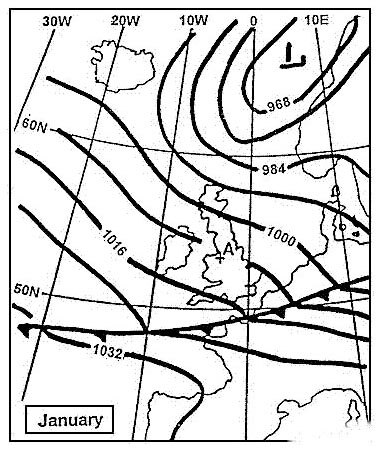 Be used for range information by civil aircraft.
Be used for range information by civil aircraft. When mode c is selected on the aircraft ssr transponder the additional ?
Question 190-18 : Pressure altitude based on 1013 25 hpa altitude based on regional qnh aircraft height based on sub scale setting height based on qfe
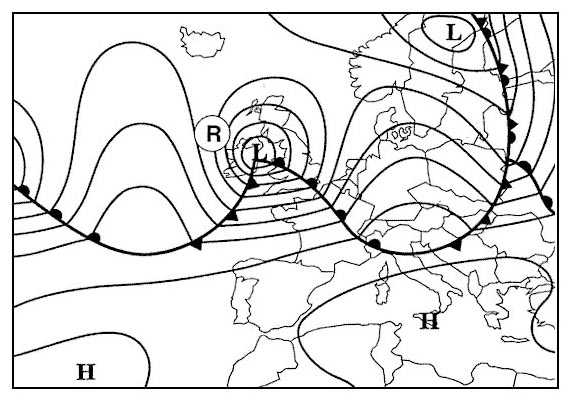 Pressure-altitude based on 1013.25 hpa.
Pressure-altitude based on 1013.25 hpa. The ground secondary surveillance radar ssr equipment incorporates a ?
Question 190-19 : Transmitter 1030 mhz .receiver 1090 mhz transmitter 1090 mhz .receiver 1030 mhz transmitter 1090 mhz .receiver 1090 mhz transmitter 1030 mhz .receiver 1030 mhz
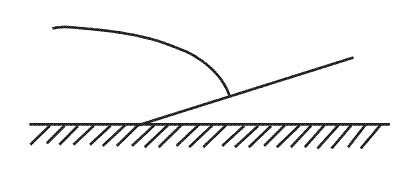 Transmitter: 1030 mhz xsxreceiver: 1090 mhz
Transmitter: 1030 mhz xsxreceiver: 1090 mhz Assuming sufficient transmission power the maximum range of a ground radar with ?
Question 190-20 : 333 km 666 km 1333 km 150 km
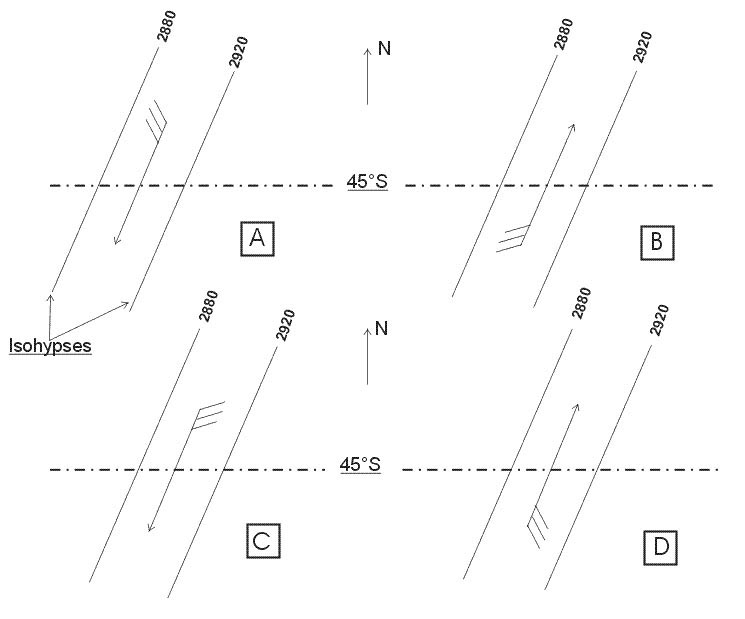 333 km.
333 km. A radio beacon has an operational range of 10 nm .by what factor should the ?
Question 190-21 : Four six two eight
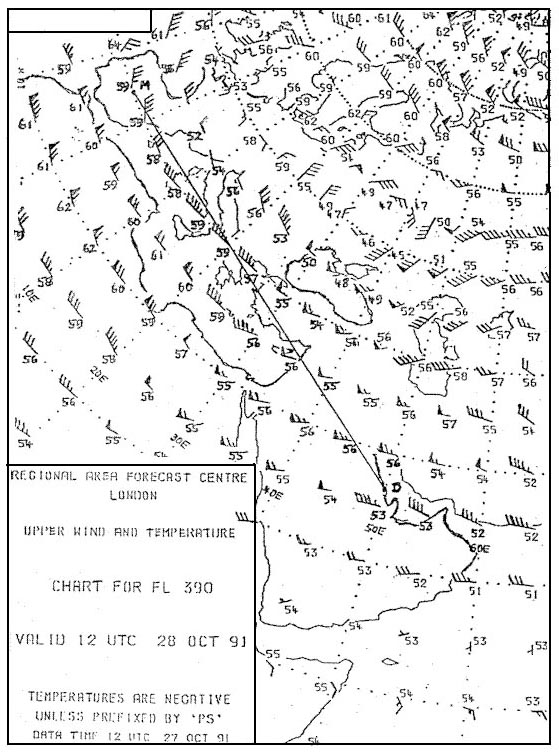 Four.
Four. Airborne weather radar systems use a wavelength of approximately 3 cm in order ?
Question 190-22 : Detect the larger water droplets transmit at a higher pulse repetition frequency for extended range obtain optimum use of the cosecant squared beam detect the smaller cloud formations as well as large
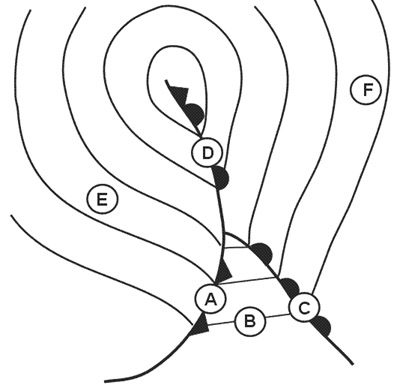 Detect the larger water droplets.
Detect the larger water droplets. The iso echo facility of an airborne weather radar is provided in order to ?
Question 190-23 : Detect areas of possible severe turbulence in cloud give an indication of cloud tops inhibit unwanted ground returns extend the mapping range
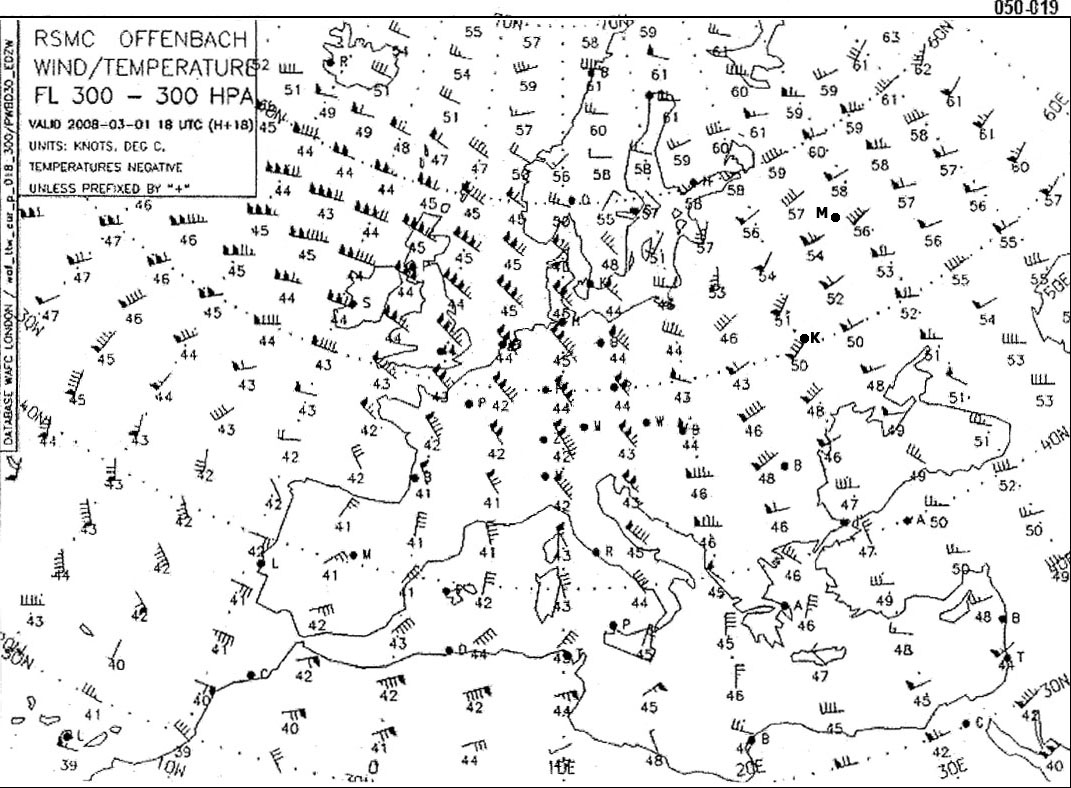 Detect areas of possible severe turbulence in cloud.
Detect areas of possible severe turbulence in cloud. In the mapping mode the airborne weather radar utilises a ?
Question 190-24 : Fan shaped beam effective up to a maximum of 50 nm to 60 nm range fan shaped beam effective up to a range of 150 nm pencil beam to a maximum range of 60 nm pencil beam effective from zero to 150 nm
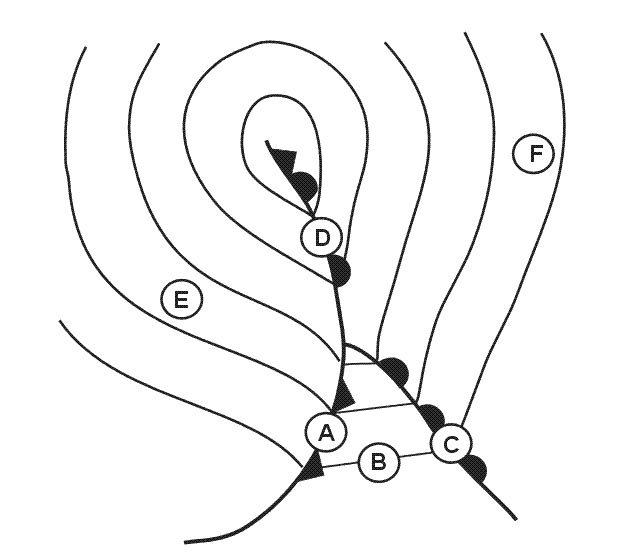 Fan shaped beam effective up to a maximum of 50 nm to 60 nm range.
Fan shaped beam effective up to a maximum of 50 nm to 60 nm range. Which of the following cloud types is most readily detected by airborne weather ?
Question 190-25 : Cumulus cirrocumulus stratus altostratus
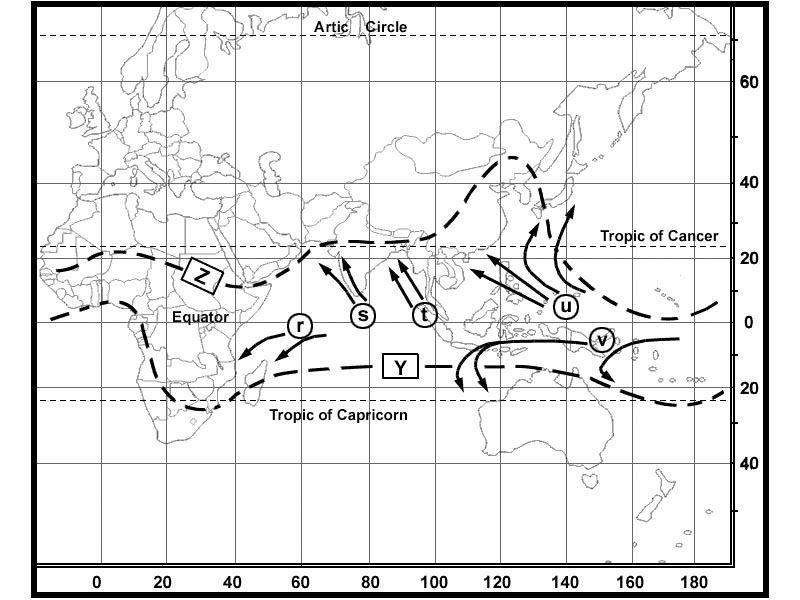 Cumulus.
Cumulus. Why is a secondary radar display screen free of storm clutter ?
Question 190-26 : The principle of 'echo' return is not used in secondary radar the frequencies employed are too high to give returns from moisture sources a moving target indicator facility suppresses the display of static or near static returns the frequencies employed are too low to give returns from moisture sources
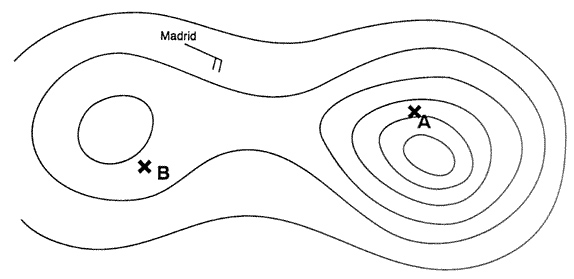 The principle of 'echo' return is not used in secondary radar.
The principle of 'echo' return is not used in secondary radar. In order to indicate radio failure the aircraft ssr transponder should be ?
Question 190-27 : 7600 7700 7000 7500
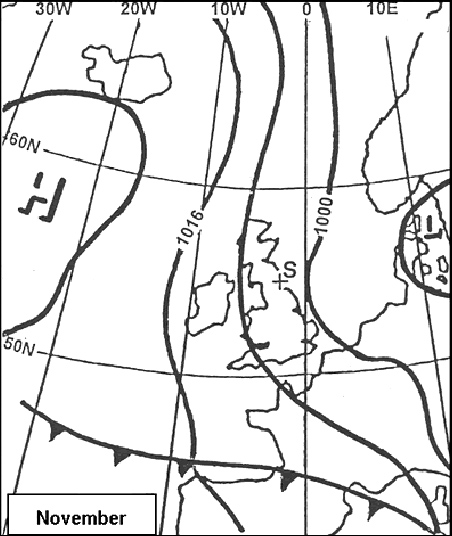 7600.
7600. In order to indicate unlawful interference with the planned operation of the ?
Question 190-28 : 7500 7600 7700 7000
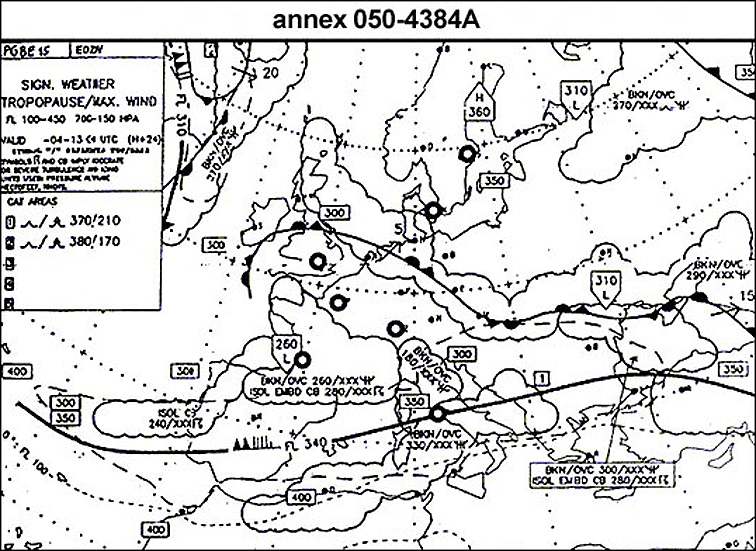 7500.
7500. An apparent increase in the transmitted frequency which is proportional to the ?
Question 190-29 : The transmitter moves towards the receiver the transmitter moves away from the receiver the receiver moves towards the transmitter both transmitter and receiver move towards each other
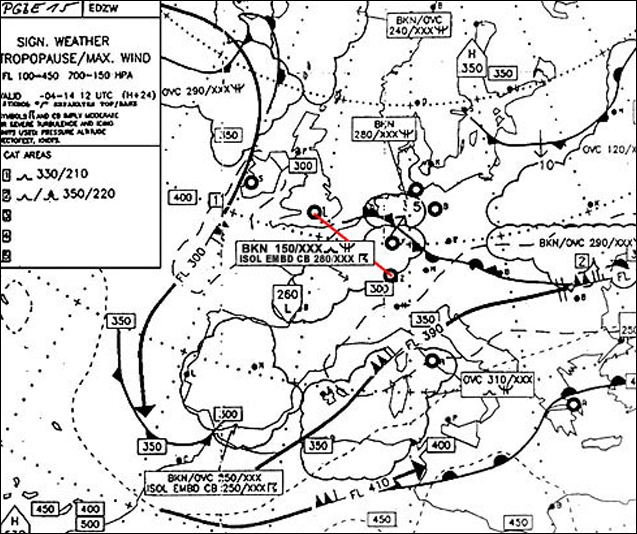 The transmitter moves towards the receiver.
The transmitter moves towards the receiver. A primary radar operates on the principle of ?
Question 190-30 : Pulse technique transponder interrogation phase comparison continuous wave transmission
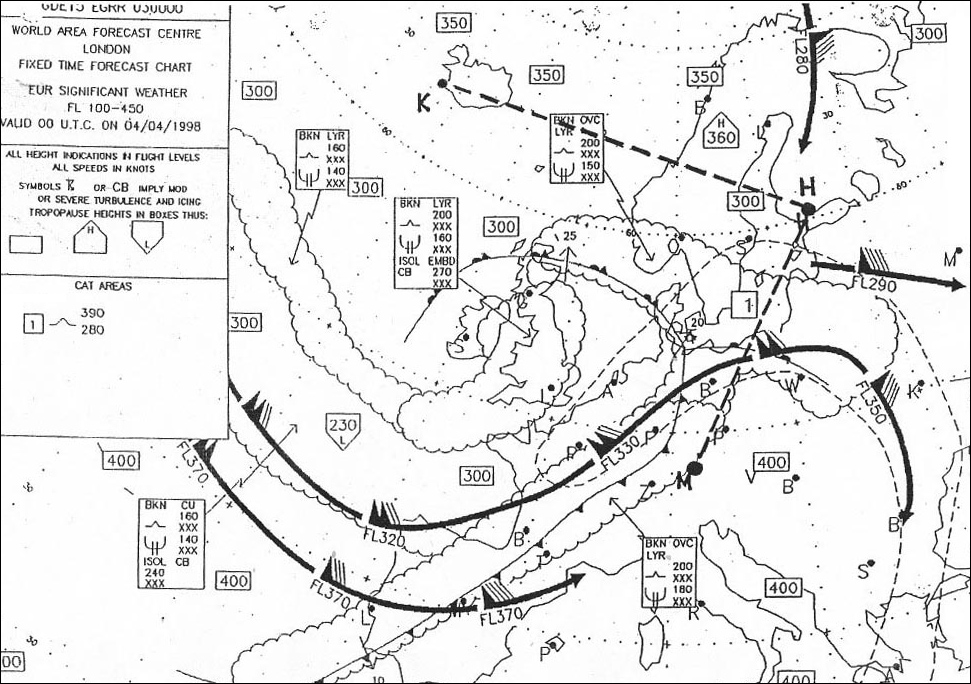 Pulse technique.
Pulse technique. The main factor that limits the range of an ndb is the ?
Question 190-31 : Transmitted power height of the transmitter direction of the plane of polarisation identification modulation signal
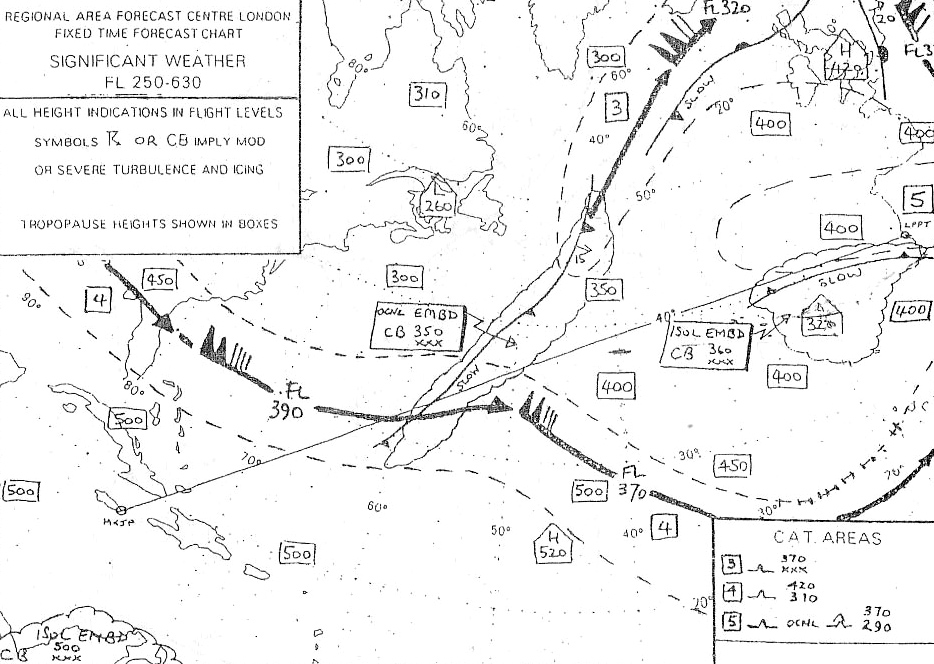 Transmitted power.
Transmitted power. The two main design functions of secondary surveillance radar ssr mode s are ?
Question 190-32 : Air to ground and ground to air data link communications and improved atc aircraft surveillance capability collision avoidance using tcas ii and improved long range hf communication capability continuous automatic position reporting using global positioning system gps satellites and collision avoidance using tcas ii the elimination of ground to air communications and the introduction of automatic separation between aircraft using tcas ii
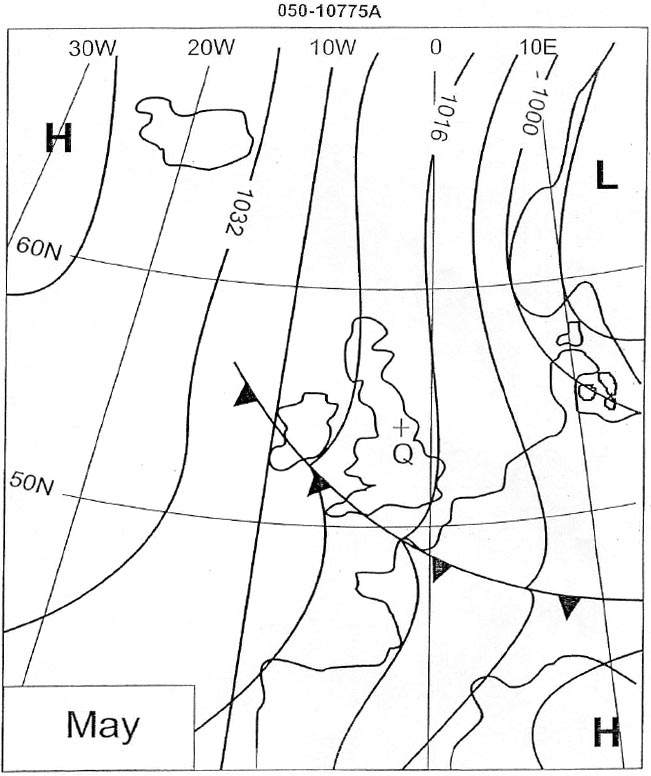 Air to ground and ground to air data link communications and improved atc aircraft surveillance capability.
Air to ground and ground to air data link communications and improved atc aircraft surveillance capability. A frequency of 10 ghz is considered to be the optimum for use in an airborne ?
Question 190-33 : The larger water droplets will give good echoes greater detail can be obtained at the more distant ranges of the smaller water droplets static interference is minimised enables the aircraft to detect clear air turbulence
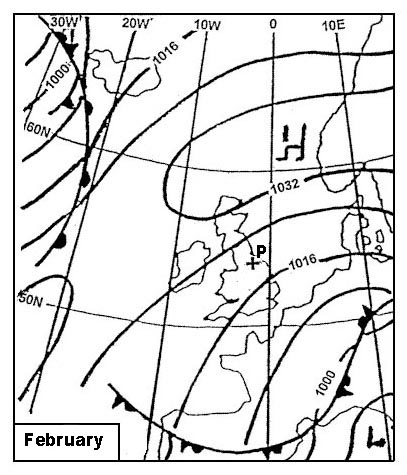 The larger water droplets will give good echoes.
The larger water droplets will give good echoes. Which of the following is a complete list of airborne weather radar antenna ?
Question 190-34 : Roll and pitch roll pitch and yaw pitch and yaw roll and yaw
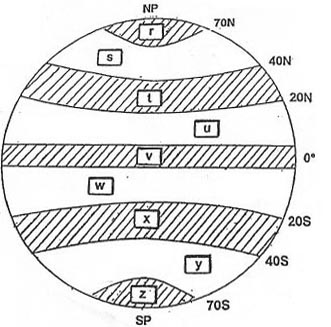 Roll and pitch.
Roll and pitch. In an airborne weather radar that has a colour cathode ray tube crt increasing ?
Question 190-35 : Green to yellow to red yellow to amber to blue green to red to black yellow to orange to red
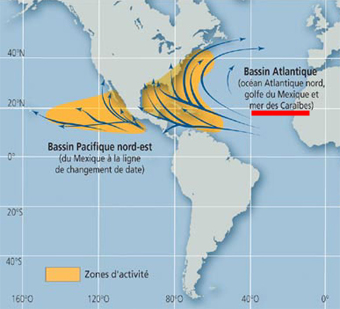 Green to yellow to red.
Green to yellow to red. When an aircraft is operating its secondary surveillance radar in mode c an air ?
Question 190-36 : 100 ft 200 ft 250 ft 150 ft
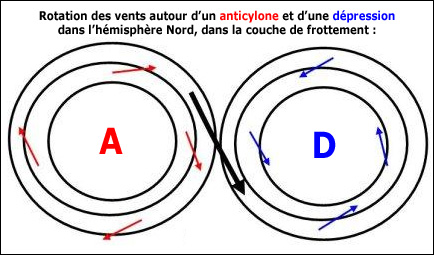 100 ft.
100 ft. A radar facility transmitting at a pulse recurrence frequency prf of 1200 ?
Question 190-37 : 69 nm 135 nm 270 nm 27 nm
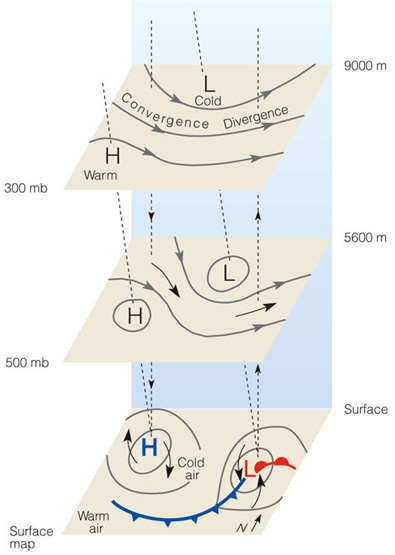 69 nm.
69 nm. The frequency of an ssr ground transmission is ?
Question 190-38 : 1030 +/ 0 2 mhz 1050 +/ 0 5 mhz 1090 +/ 0 3 mhz 1120 +/ 0 6 mhz
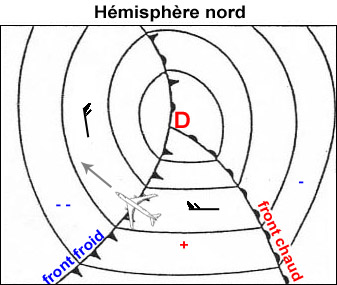 1030 +/- 0.2 mhz.
1030 +/- 0.2 mhz. The doppler navigation system is based on ?
Question 190-39 : Radar principles using frequency shift phase comparison from ground station transmissions doppler vor dvor navigation system radio waves refraction in the ionosphere
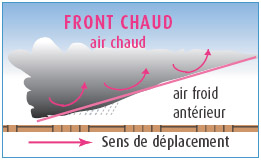 Radar principles using frequency shift.
Radar principles using frequency shift. In which mode of operation does the aircraft weather radar use a cosecant ?
Question 190-40 : Mapping contour weather manual
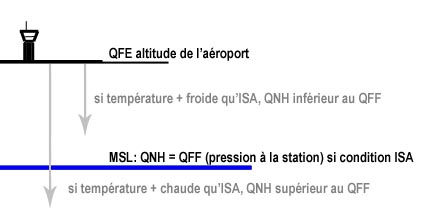 Mapping.
Mapping. ~
Exclusive rights reserved. Reproduction prohibited under penalty of prosecution.
7559 Free Training Exam
